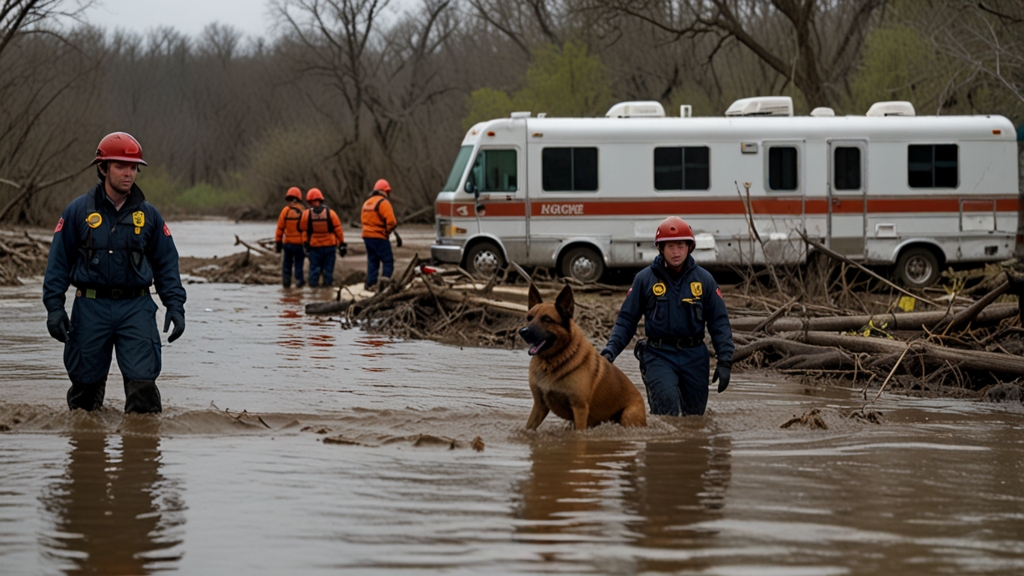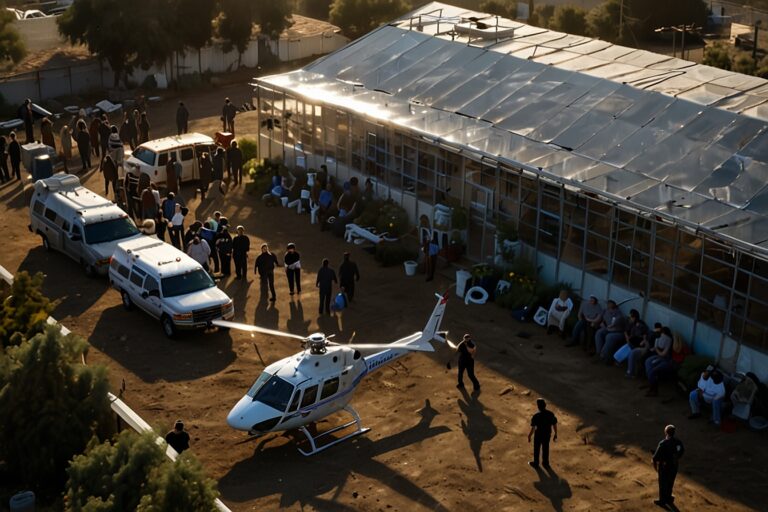
TL;DR
- Search efforts continue in Kerr and Kendall Counties, Texas, after catastrophic flooding left over 100 dead, including 36 children.
- Cadaver dogs, boats, drones, and mules are being used to search 60 miles along the Guadalupe River.
- The tragedy marks Texas’ deadliest freshwater flooding in more than a century.
- Emotional strain is rising among first responders and volunteers, many of whom are encountering disturbing scenes.
- Authorities are urging the public not to disturb debris piles, which may still contain human remains.
Deadly Flood Strikes Texas Hill Country
The flash flooding that devastated Kerr County, Texas, and surrounding areas over the July 4 holiday is now being called the deadliest freshwater flood the state has faced in over a century. Triggered by a night of extreme rainfall, the Guadalupe River rose from 3 to 30 feet in just 45 minutes, sweeping away homes, RVs, and entire summer camps.
More than 100 people are confirmed dead, with at least 150 missing, according to local officials. In Kerr County alone, authorities have confirmed 36 child fatalities.
A Grueling and Emotional Search Operation
Search teams from across the U.S. and Mexico are working in sweltering Texas heat to recover bodies and survivors along a 60-mile stretch of the Guadalupe River. Utilizing helicopters, drones, dogs, and even mules, responders navigate treacherous piles of debris and unstable terrain.
Joe Rigelsky, co-founder of the nonprofit Upstream International, described to CNN the moment his team recovered the body of an infant on Wednesday:
“You catch the smell. You mark a dog, and the place goes quiet,” he said. “This morning … they ended up taking an infant out of this area.”
The Data
| Metric | Value | Source |
| Confirmed Deaths | 100+ | CNN |
| Child Fatalities in Kerr County | 36 | Kerr County Sheriff’s Office |
| Missing Persons in Kerr County | 150 | CNN |
| River Rise | 3 ft to 30 ft in 45 minutes | National Weather Service |
| Search Area | 60 miles of the Guadalupe River | Virginia Beach Water Rescue Team |
| Deadliest Freshwater Flood in Texas | Over 100 years | NOAA Historical Flood Data |
Cadaver Dogs, Grief, and the Human Cost
The process begins when cadaver dogs mark a scent in the wreckage. Volunteers and first responders then dig by hand or use power tools to uncover victims. The work is slow, painstaking—and deeply traumatic.
Amanda Nixon, a disaster trauma specialist on site, noted the emotional toll:
“I try to just let them be human in the moment and feel what they need to feel, and let them know that’s OK.”
Tony Dickey, chaplain for the United Cajun Navy, broke down recalling responders uncovering children:
“That image is there… But they’re willing to take that emotional toll to bring that loved one home to that family.”
Families Still Missing, Officials Warn Against Disturbing Debris
Authorities continue to warn the public to stay away from debris piles, which may still contain human remains.
Sgt. Jonathan Lamb of the Kerrville Police Department emphasized the risk:
“Do not use heavy equipment on debris piles until they’ve been checked by a search party.”
In addition, residents have been told not to burn debris due to the risk of unrecovered bodies within the rubble.
Complicated Logistics in Identifying Victims
Many flood victims were staying in RVs or cabins, making it difficult for officials to determine who was present and who is still missing. Even with license plates and vehicle registrations, the process of tracking individuals remains incomplete.
Crews recently dug out a submerged truck that had been marked by dogs, but initially found no bodies inside. The next morning, they discovered the infant nearby, highlighting the unpredictable nature of the river’s destruction.
Rescuers Face Heat, Trauma, and Fatigue
Capt. Max McQuarrie from the Virginia Beach Water Rescue Team explained the dangers:
“It’s going to be a slow, methodical process … to really provide the answers that everyone’s looking for.”
Teams battle heat, unstable terrain, and emotional strain. Many are pushing themselves to the brink of exhaustion.
Mike Toberer, CEO of Mission Mules, emphasized that responders will not leave until their job is done:
“You talk to any of those guys, they’ll tell you—they’re not going home until they find everybody.”
Aid and Recovery Efforts Mobilize
A coalition of federal, state, and nonprofit organizations is on the ground offering relief, including the Red Cross, United Cajun Navy, and Faith-Based Networks. Aid includes:
- Mobile trauma counseling
- Hot meals and water stations
- Shelters for displaced families
- Missing person registration
Josh Gill, incident coordinator for the United Cajun Navy, summed up the effort:
“We want to hit every treetop, every rubble pile… and we still hope, every morning, that we’re going to find survivors.”
A Humanitarian Crisis with Lingering Questions
While first responders are widely praised for their efforts, officials face growing scrutiny over preparedness and early response timelines. The rapid rise of the Guadalupe River caught many communities off-guard despite flood warnings.
CNN reports that the area included at least 18 summer youth camps—most of which were swept away. Some camp leaders and children are among the dead and missing.
As the days pass, and hope for survivors dims, search teams continue to uncover the depth of the tragedy—one life, one family at a time.






